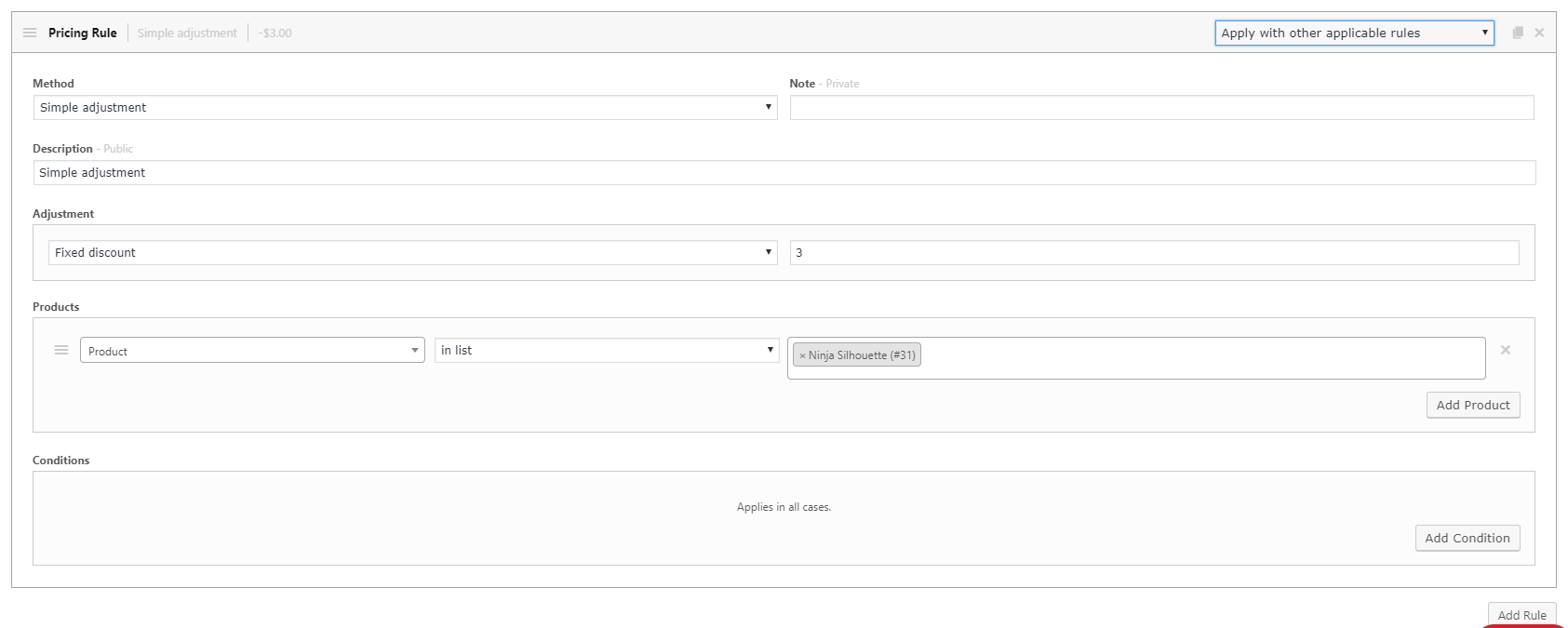Are you looking to set up bulk discounts for your customer’s in your WooCommerce store? In this article, we’ll take a look at the various options you have for setting up discounts and promotions.
Out of the box, WooCommerce doesn’t provide any discount functionality, so you’ll need to either write some code snippets or install a plug-in to get your discount logic working.
Click here for more details about the "Learning WooCommerce Development By Example" book
Before you can decide on how to implement your discount logic you’ll need to have a think about what kind of discounts you want to apply.
We’ll begin by looking at some of the questions you need to answer before setting things up, then we’ll look at some options to implement discounts in your store
What sort of discounts do you want and how do you want them to be applied?
This is maybe the most important question to answer before deciding which route to go down.
If you’re after something simple like discount x% from an order if a customer has 5 plant pots in their basket then it might be possible to implement your logic with a snippet. If you’re looking to implement something more complex like 10% off x if a customer has registered in the last 6 months and has 7 coat hangers in their basket then you’d be better looking at plugins.
Broadly there are 4 different ways of setting up a promotion or discount
By Customer – Add a promotion that applies to a specific customer or group of customers. You may also want to target customers based on other criteria, e.g all customers who have ordered in the last 6 months, or all customers who have ever bought something from category x in the past
By Product – Add a discount or promotion that applies to a specific product, this is the category that most bulk discounts would fit under, for example, buy 5 of x and get 35% off
By Category – Apply a discount or promotion to a whole category of products, e.g. buy 5 t-shirts and get 2 free
By Date – Apply discounts based on the date something happens, you might want to combine this with one of the other categories. As an example, you could give 50% off anything in the t-shirt category to any customer who had bought a t-shirt in the last 3 months.
You really need to consider how you want your discounts to work for you before implementing your discounts, once you have an outline of how you want your discounts to work then you can look for the option that suits you best.
When designing discounts it’s always a good idea to keep things a simple as possible, if you have multiple discounts it is likely to be very time consuming to set-up and also confusing for your customers. As a rule, try and think what discounts would be most beneficial to your business and then try and implement them as simply as possible.
If you want to read more on setting up discounts effectively, Tutsplus has an article that dives deep into the process of setting up a discount strategy.
When do you want discounts to be applied and what sort of user experience do you want?
This is something to consider if you’re thinking of implementing more complex discounts.
Let’s imagine you have a promotion that allows a customer to buy 5 t-shirts and get two free. When do you want the user to be informed of the promotion? Should they see that the two t-shirts are discounted as soon as they have been added to the basket? Or should they only see the discount on the checkout screen?
Another thing to consider in this scenario is should the user be prompted when they qualify for a promotion. In the example above you might want a message to appear on screen telling the user when they have qualified for the two free t-shirts, you may also want to automatically add the free t-shirts to the basket for them.
Taxes
If your store uses tax calculations and you are looking to add percentage based promotions or discounts then you’ll need to consider if you want to apply the discounts before or after the tax calculations on the order have taken place.
Variable Products
If your store sells a lot of variable products you should take a look at a plug-ins support for variable products before making a purchase. I would advise checking to see if a plugin supports discount promos on individual variable products rather than only dealing with the top level variant.
Speed
Having a fast running website is important for user experience and it also makes a difference to your sites positions in the search engines. With this in mind you don’t want to choose a plug-in that slows your sites down. I would recommend considering the following tow factors before choosing a plug-in.
Promotion Complexity – If you’re thinking of running a promotion that has quite complicated qualifying criteria, you need to consider the overhead that it might incur to work out if each customer qualifies for the promotion/discount. As mentioned before, try to keep your discounts/promotions as simple as possible and if you do need to use complex criteria test your promotions on a test site before putting them before the public.
Number of products in your catalog – If your store contains a lot of products, adding promotion logic could incur a significant overhead. So again, I would advise setting up your plugin/promotions on a test site and stress testing them before moving them over to your live store.
Now we’ve considered what factors you need to consider before setting out a discount/promotion strategy and choosing a plugin, lets take a look at three different discount plug-ins.
WooCommerce Dynamic Pricing
WooCommerce Dynamic Pricing is available directly from WooCommerce, at the time of writing it retails at $129 for a single site, $199 for 5 sites and $299 for 25 sites.
All of these prices include a year of updates and support, there is no free option for this plug-in but it does come with a 30-day money back guarantee.
The plug-in has 4 different ways of applying pricing logic –
- Single products pricing
- Orders pricing
- Roles pricing
- Categories pricing
A number of the online reviews for for the Dynamic Pricing plugin mention that it does not display discounts to users until they hit the cart screen, so if you are looking to inform users of their discounts earlier on in the buying process this may not be the right plug-in for you.
As with many of the official WooCommerce plugins there is extensive documentation available online, I would certainly recommend going this thoroughly before making a purchase.
Discount Rules for WooCommerce
Discount Rules for WooCommerce is written by Flycart and at the time of writing retails for $39 per year for a single site. There are also price points available for multi-site installations.
The plug-in offers a wide range of discounts including –
- Store-wide
- Specific Product
- Specific Category
- Buy 2 get 1 free
Flycart provides a clear and comprehensive list of the discounts offered alongside screenshots of the admin interface used to set-up each discount here. The plugin can apply discounts to both top-level and individual variable products.
From a UI perspective, the plugin provides discount tables, it is also able to display messages linked to promotions/discounts on the cart page and is able to calculate and display to the customer how much has been saved on an order.
There is also a free version of the plug-in available so you can give it a try before purchasing. Flycart also offers a 14-day money back guarantee so you can try the full version of the plugin before you buy.
WooCommerce Dynamic Pricing & Discounts
WooCommerce Dynamic Pricing & Discounts is sold on the Envato Code Canyon marketplace and at the time of writing costs $49 for a single site license. The price includes 6 months of support which can be extended by a further 6 months for an additional $16.50.
The plug-in offers a wide range of discounts, including –
- Bulk discounts
- Discounts for quantity
- Discounts for user role
- Flat discount for total
From a UI perspective, it actually states on the products FAQ page that the initial plug-in development was aimed at creating a robust logic engine that would cover as many promotion/discount combinations as possible, and that UI functionality to display promotions has been gradually introduced (and is still being added) as the plug-in matures. Having said that the plug-in does provide tables to display bulk discount and tiered pricing rules.

The plug-in is able to handle promotions on individual variable products. As with many other Code Canyon plugins you are able to try the plug-in online before you buy, and I would recommend this as you get a good feel for how the plug-in’s rules and back end interface work.
Click here to enroll in our Free WooCommerce Coding Course

